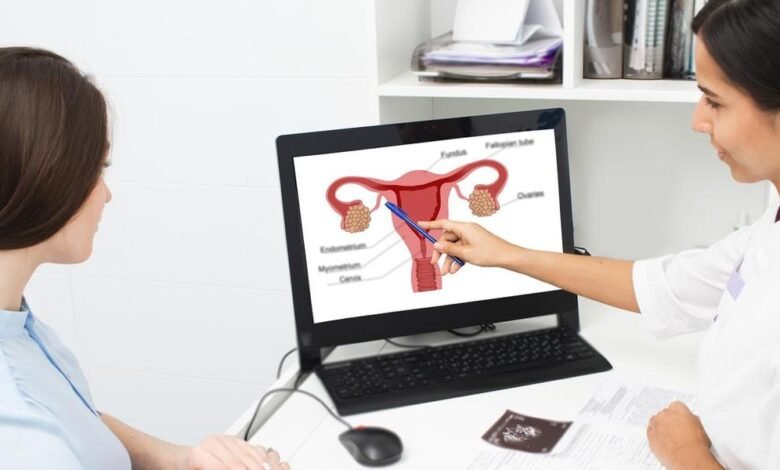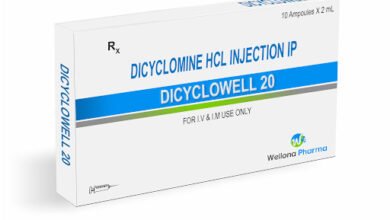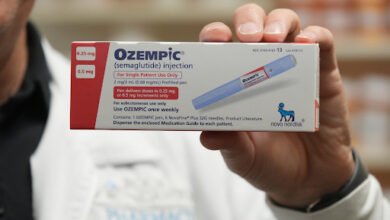Q&A: A Healthcare Provider’s Perspective on Diagnosing Uterine Health Conditions

One in four women in the United States deal with period pain so severe it affects their quality of life, but figuring out why can be a huge challenge.
Take endometriosis, a condition that causes painful, heavy periods and is linked to infertility and other health problems. The average woman with endometriosis waits almost nine years to be diagnosed — and some women wait much longer, if they get a diagnosis at all.
One 2020 study of women with endometriosis found that more than three out of four women were misdiagnosed with a different physical or mental health condition before getting a correct diagnosis.
We talked to Mary Jane Minkin, M.D., a clinical professor of obstetrics, gynecology and reproductive sciences at the Yale University School of Medicine and a member of HealthyWomen’s Women’s Health Advisory Council, about why uterine health problems are so hard to diagnose — and how patients can help smooth out the process.
HealthyWomen: Why is it often difficult for women with uterine health problems to get a diagnosis? What are some of the barriers to diagnosing conditions such as endometriosis, polycystic ovary syndrome (PCOS) and fibroids?
Mary Jane Minkin: These conditions are hard to clearly identify, meaning there are no set criteria that a patient needs to meet in order to get a diagnosis. And a lot of what we have to go on as providers as far as how patients are feeling, what kind of pain they’re having and how much they’re bleeding is different for each patient.
Another barrier to diagnosing this type of condition is that it’s not always clearly gynecological. If a patient has pain in her belly, she may visit a gastroenterologist who may see the pain as a symptom of Crohn’s disease. Or she may think the pain is coming from her bladder and assume she has a urinary tract infection (UTI).
If you’re getting arm pain, you know it’s a problem with your arm, right? But if you’re getting belly pain, it could be gynecological or it could be something else, and you may not see the type of provider you need to get the right diagnosis.
Read “Why Getting an Endometriosis Diagnosis Is Painfully Slow” >>
HealthyWomen: Can you walk us through the steps you take when diagnosing uterine health problems?
Mary Jane Minkin: Let’s say a woman is having terrible menstrual cramps, and over-the-counter pain relievers aren’t doing the trick. She may be prescribed birth control pills, which should work to help treat her cramps as long as nothing is going on with her uterus. If she’s taking pain relievers and birth control pills and still in a lot of pain, we need to pay attention to that, and look for something like endometriosis.
The next step is to do a pelvic exam, but you can’t necessarily find endometriosis this way. So you do an ultrasound, but endometriosis doesn’t always show up in an ultrasound because the masses can be tiny. Sometimes the only way to know for sure if a patient has endometriosis is to go in surgically — that’s how hard it is to diagnose.
It used to be felt that you had to do surgery before you treated a patient for endometriosis. Now the official recommendation is to treat her with medication for endometriosis if you think that’s what’s going on. No surgery required.
HealthyWomen: What types of questions do you ask patients when diagnosing uterine health problems? How can patients help the process go more smoothly?
Mary Jane Minkin: I ask a lot of questions about pain — when it occurs, if it’s constant, if she has it every month, if it happens during sex, etc. If a patient is dealing with bleeding issues, I ask about when during her cycle she bleeds and how heavy her bleeding is.
I also like to know which medications she’s tried. If she’s on birth control pills, I ask how long she’s been taking them and whether they’ve made a difference in her symptoms. Things like that can give me helpful information about what’s going on.
As far as what patients can do to help me make a diagnosis, detailed information is key. If they can tell me, “Yes, I’ve been keeping track and I soak through a big, heavy pad every hour for six hours straight,” that’s a very helpful detail.
It also helps me to know a patient’s family medical history, since endometriosis can run in families. The more information she can give me, the better.
HealthyWomen: What should women expect from the diagnosis process?
Mary Jane Minkin: I tell my patients, “It may take us several appointments to get you better.” And I ask them to take good notes about what they’re experiencing along the way.
HealthyWomen: Is there anything else you’d like to add as an expert on these tough-to-diagnose conditions?
Mary Jane Minkin: I think the most important thing is to find a provider who listens to you. Someone you feel comfortable with, whom you can trust. Someone who won’t dismiss what you’re saying.
This resource was created with support from Myovant Sciences GmbH.
Source link
#Healthcare #Providers #Perspective #Diagnosing #Uterine #Health #Conditions



